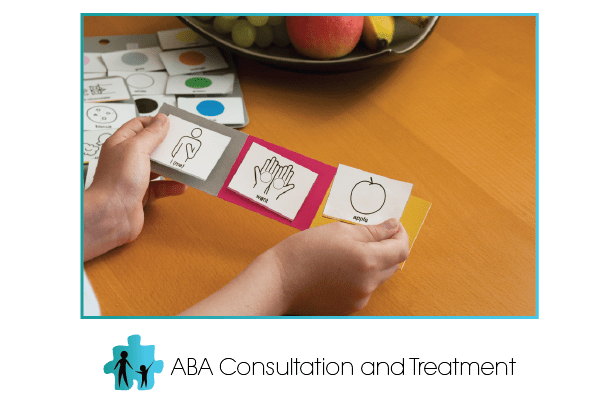Staying Organized in Sessions
Perhaps the most important aspect of creating an autism-friendly therapy environment is to ensure the workspace is tailored to your young client’s needs. This is often overlooked because many therapists are struggling to keep track of the tasks, materials, and necessary data of each session. Individualizing a client’s workspace is important for correct data taking and monitoring the number of times it takes to run a trial. Sometimes, due to a lack of organization, learning and changing problem behavior could take much longer or in some cases be impeded. To help, we at Steinberg Behavior Solutions have listed a few of the tips our therapists use in order to stay organized and remain focused on helping our clients learn and thrive!
1. Separate Teaching Materials
Traditionally, children with autism are easily distracted. That’s why it’s critical for an ABA therapist to keep their materials organized and by only taking out what they need. This approach is not only effective at minimizing distractions but it also helps reduce clean up time. Keeping materials within hands reach during sessions and near their working area can help a therapist keep their young client focused and on task. If a therapist works primarily on the floor with a particular client, then keep items close at hand on the floor.
Additionally, make sure to separate materials that are currently being worked on from targets that have been mastered. It is helpful to designate separate storage places for current and mastered targets. This can give a therapist easy access and allow all team members to know immediately where certain materials are located.
Furthermore, separating materials according to programs can help immensely in staying organized and running productive sessions. For example, dividing current targets for receptive, matching, and expressive trials can help a therapist know what is needed for the session and what can stay put away.
2. Organize your client’s workspace
A therapy room should be organized so that a child can access required materials independently. It is critical for them to learn how to get their own materials, toys, games and reinforcers. Whether a therapy room has drawers, shelves or folders, make sure the clutter is out of the child’s view but remains accessible to them. That means they should not have to use a step stool or have to bend down to get the items.
3. Less is more
A therapist’s work area should offer a lot of open space where they can freely move around with their client. In an ABA therapy room, the less clutter and non-essential furniture, the greater opportunity there is to learn and grow. What should be in the room is a table with two chairs, some storage for learning materials, and preferred items to use as reinforcement. But apart from that, the room’s floor space should be uncluttered to allow for break-time, learning and teaching in that environment.
Organization in an ABA therapy session is critical. It helps avoid delays and promotes solid learning. It can also provide you, the therapist, with more time to focus on implementing therapy rather than finding the right materials needed for a certain task.



